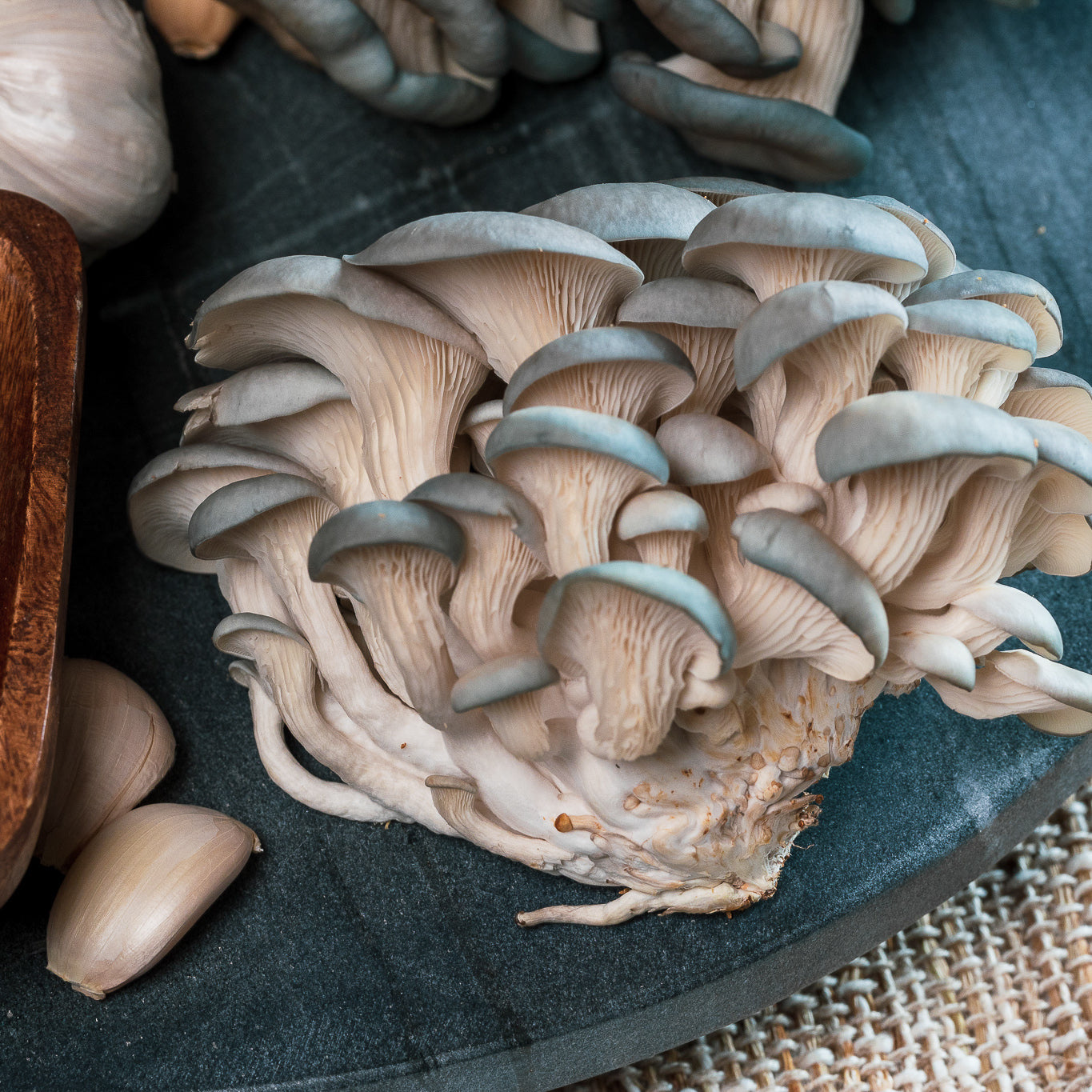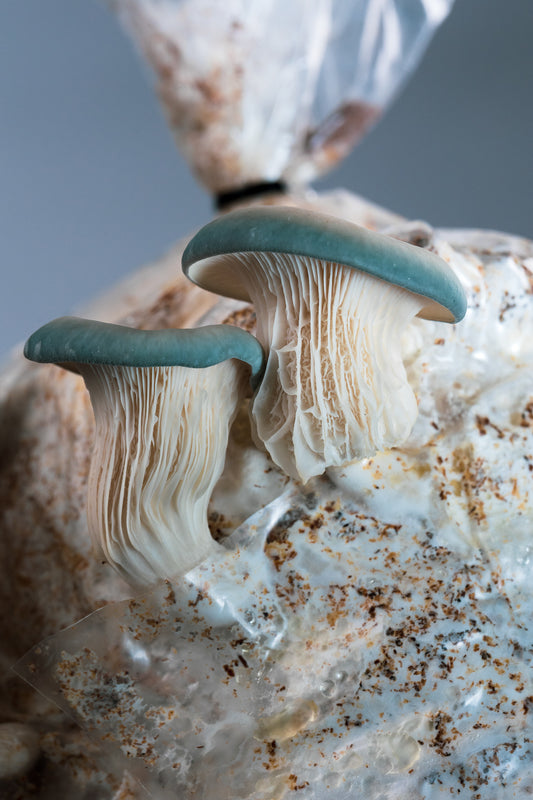Let's start with the basics.
To start with, you’ll need a few essential elements to create an environment for your mushrooms to thrive and do what they do best. Once your environment is created, simply follow the steps below and watch nature thrive.
Carefully curate environmental conditions
Temperature
SUBSTRATE
Substrate is organic matter that serves as food for the spawn. In nature, mushrooms grow naturally in soil, manure, decaying leaves, and downed tress. Substrate can be made from any organic materials containing carbohydrate and nitrogen. Typical substrate materials include cardboard, coffee grounds, wood chips, straw, and compost. Although at Circular Farm, we use organic soybean hulls and sawdust which is a byproduct of the logging industry.
Humidity
Some moisture must be present throughout the mushroom production process. Commercial operations have rooms with humidity control, but misting with a spray bottle can be sufficient for growing mushrooms on a small scale.
Light
Direct sunlight inhibits mycelium growth in the colonization phase. Most mushrooms require only blue light for proper fruiting body development.
Ventilation
Direct sunlight inhibits mycelium growth in the colonization phase. Most mushrooms require only blue light for proper fruiting body development.
Growing Mushrooms
Ready to start your Circular Economy?
-

Fresh Mushrooms
Welcome to the world of Circular Farm's fresh mushrooms, where nature's essence...
-

Growing Supplies
Embark on the enriching journey of growing your own mushrooms at home...







